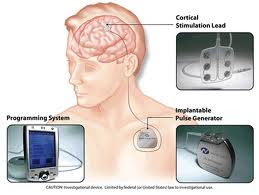Therapy for help Stroke Patients Recover - Having a stroke can be a very big deal indeed. The heart is so important to so many functions in the body that any glitches -- however temporary -- can cause major consequences. A stroke, for example, can create a number of troublesome symptoms, including problems with physical mobility. Millions of stroke survivors experience difficulty in walking. But now here's some ood news: for those recuperating after a stroke, more expensive, high-tech therapy isn't necessarily superior to intensive at-home strength and balance training.
In a massive stroke rehabilitation study, patients who had physical therapy at home improved their ability to walk just as well as those who were treated in a training program that required the use of a body-weight supported treadmill device followed by walking practice (called "locomotor training").
The National Institutes of Health study randomly assigned 400 patients into three study groups who participated in 36 90-minute sessions over 12 to 16 weeks. All patients had either severe or moderate walking impairments. The average age of the patients was 62 years old.
At the end of one year, 52% of all the study participants had made significant improvements in their ability to walk.
All groups achieved similar gains in the speed and distance of their walking, their physical mobility, motor recovery and social participation, resulting in improved quality of life.
The researchers found that the at-home group was the most likely to stick with the program, however. Only three percent dropped out of this arm of the study, compared to 13% of the more high-tech locomotor training groups.
And some more good news: patients made significant improvements in walking speed long-term, despite widely held beliefs in the medical community that most improvements after stroke are complete by six months. The researchers noted that, based on these results, recovery beyond six months could be helped with continued therapy.
The home exercise program in this study requires less expensive equipment, less training for therapists, and fewer clinical staff members. The researchers suggest another benefit, too: this intervention may help keep stroke survivors active in their own homes and community environments.
Kunjungi artikel lengkap lainnya di: Islam Akidahku dan Sains Teknologi
Dan juga anda bisa baca artikel serta mendapatkan informasi lainnya di:

0 comments:
Posting Komentar
Silahkan berikan Saran dan Kritiknya, untuk kemajuan blog dan kenyamanan bersama.